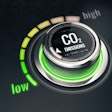
The U.S. Centers for Medicare and Medicaid Services (CMS) has announced that clinicians who participated in the Merit-Based Incentive Payment System (MIPS) in 2018 can access their 2018 performance feedback by logging in to the Quality Payment Program (QPP) website. The information should confirm whether you or your practice will receive a positive, negative, or neutral Medicare fee schedule adjustment in 2020 based on the 2018 results.
According to a blog post on the CMS website, 98% of eligible clinicians participated in MIPS for 2018, up from 95% in 2017, and 97% will receive a positive payment adjustment by virtue of exceeding the 15-point performance threshold.
 Erin Stephens of Healthcare Administrative Partners.
Erin Stephens of Healthcare Administrative Partners.Exactly how this will translate into an adjustment factor for 2020 is not yet known. The MIPS program is designed to be budget-neutral, which means that for every positive adjustment there has to be a corresponding negative adjustment.
With such success by the physician community in meeting the target, we can only assume that the financial rewards will be minimal. However, achieving a final score of at least 70 points entitles clinicians to participate in the exceptional performance bonus, which is a $5 million fund available separately from the general MIPS budget neutrality calculation.
Qualifying participants in the Advanced Alternative Payment Model (Advanced APM) program nearly doubled in 2018, according to the CMS post, and those participants will receive a 5% incentive payment. There certainly are benefits for radiology groups to participate in Advanced APMs, even beyond the Medicare program, but unfortunately there are few opportunities, as these models are geared toward primary care rather than diagnostic radiology practices.
The Medicare Physician Compare website has also been updated with 2017 Quality Payment Program performance information. Physicians' profile pages have been updated with 12 MIPS quality measures, eight Consumer Assessment of Healthcare Providers and Systems (CAHPS) survey measures, and 17 Qualified Clinical Data Registry (QCDR) quality measures reported by groups and individual clinicians. CMS said you can learn more about how QPP performance information is selected for public reporting on Physician Compare in the "Quality Payment Program Performance Information on Physician Compare Fact Sheet."
The report on 2018 participation shows that QPP participation is becoming more routine for physicians, and the performance of those participants is achieving all-time high levels. This will undoubtedly lead to more topped-out measures (those measures whose median performance score is 95% or higher and whose performance is "so high and unvarying that meaningful distinctions and improvement in performance can no longer be made") with the result that new, more difficult standards will be established.
In the long run, the positive rewards for QPP participation will be diminished while the penalties for nonparticipation will remain significant. Achieving a final score that earns the exceptional performance bonus will maximize a practice's positive Medicare fee schedule adjustment.
Erin Stephens is senior client manager of education at Healthcare Administrative Partners.
The comments and observations expressed are those of the author and do not necessarily reflect the opinions of AuntMinnie.com.



















